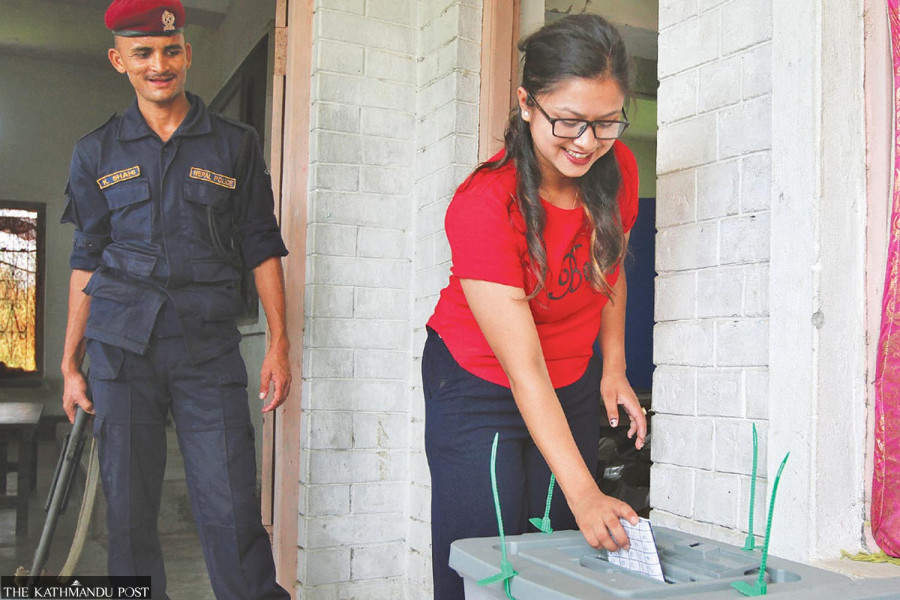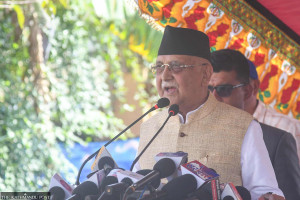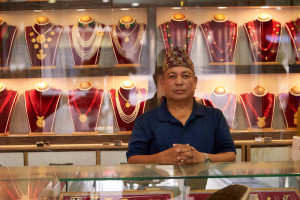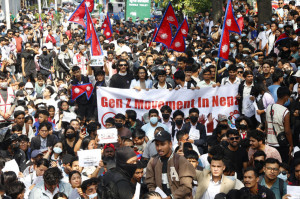National
Poll commission suggests November 18 for federal and provincial elections
Holding both elections in a single phase is possible, cost-effective and easier from the management point of view, the commission says.
Prithvi Man Shrestha
The Election Commission on Wednesday recommended the government hold federal and provincial elections on November 18.
Although the last federal and provincial and local elections in 2017 were conducted on two different dates—November 26 and December 7—the commission this time is aiming the two polls in a single phase.
The commission recommended the date during the meeting with Prime Minister Sher Bahadur Deuba on Wednesday.
“We recommended November 18 for federal and provincial elections,” Chief Election Commissioner Dinesh Thapaliya confirmed to the Post. “We can hold both elections in a single day across the country.”
The commission said in a press statement that holding the elections in a single phase would be cost effective as well as easier from the management point of view.
As per the Election Commission Act 2017, the government announces election dates in consultation with the Election Commission.
The commission said that election date was recommended also assuming that tenure of the existing House of Representatives and Provincial Assembly would end on December 8, the day when the commission had declared the winners of the second phase of the elections in federal and provincial elections in 2017 under the first-past-the-post system.
“The prime minister also agreed to hold elections in a single phase,” Thapaliya said.
He said that they suggested the date considering that it would be convenient for the commission because there would be enough time for the commission to make preparations.
Prime Minister Deuba also on different occasions had said that the elections would be held within November.
Local elections were also held in a single phase across the country on May 13 to elect a new set of representatives for 753 local units.
But holding elections of both House of Representatives and provincial assemblies in a single phase and on the single day could be challenging in terms of security arrangement.
Several cases of election-related violence were reported on May 13 when the local elections were held in the single phase unlike in 2017.
In May, the National Human Rights Commission, which had deployed seven high-level teams led by its chairman, members and former office bearers and 45 other teams including employees of the commission in all 77 districts for election observation, remarked that (local) polls were not peaceful as expected.
Ram Prasad Bhandari, an election commissioner, said the commission believes that managing security would not be a big problem during the federal and provincial elections based on the experience of recent local elections, which were held in a single phase in May.
From the upcoming elections, 165 members will be elected to the House of Representatives under the first-past-the-post (direct election) and 110 will be elected under the proportional representation systems.
Similarly, for seven provincial assemblies, 330 members will be elected under the direct system and 220 will be elected under the proportional system.
While recommending the election date, the commission has drawn attention of the government to its wish to use electronic voting machines during the upcoming elections.
“We sent a letter to the government on Monday conveying our wish to use EVMs at least in Kathmandu Valley,” said Bhandari, the election commissioner. “We followed up on our proposal during the meeting with the prime minister on Wednesday. He said he is positive about the proposal.”
As per its statement, the commission has requested for certifying EVMs produced by domestic companies if they are used. In the case they are imported, the government has been requested to ensure supply of the EMVs by mid-August.
Officials at the commission, however, are not confident about using EVMs in the upcoming elections considering doubts among political parties about the reliability of the system.
“We are, however, in talks with the representatives of the political parties about the use of EVMs,” said Bhandari.
Earlier this year, a team led by Anil Kumar Dutta, a joint secretary at the Ministry of Communication and Information Technology, had presented a report to the Election Commission saying that there won’t be any problem in using EVMs.
“Many countries, including India, have been effectively using electronic voting machines. Nepal can easily use them,” Dutta told the Post in May. “We had recommended that the Election Commission use the electronic voting system after studying the voting system of different countries.”
According to Dutta, Nepal can use electronic voting by forming a team to aggregate voting devices as per the need of the polling constituencies.
A Carter Centre report of the 2008 Constituent Assembly polls had observed that the pilot test of electronic voting machines in Kathmandu went well, a promising sign for future elections. A year later, electronic voting machines were used in all six constituencies during the by-elections held on April 10, 2009 in Morang constituencies 5 and 7, Dhanusha, Kaski, Rolpa and in Kanchanpur.
It has been 14 years since, and the country is still relying on ballot papers and hand counting of votes.
Meanwhile, the election body said it has submitted the estimated expense of Rs10 billion to the government for holding the federal and provincial elections in a single phase on the same day.
There had been expenditure of Rs7.8 billion in these elections in 2017, according to the commission. But rise in salaries, allowances, daily allowances, increased cost of election materials, increased number of voters and voting centres, need for using information technology, and inflation among other things demand more expenditure, the commission said.
“The proposed expenditure plan also includes the cost of new vehicles required for the commission as there are not many useful vehicles with it,” said Shaligram Sharma Poudel, spokesperson at the commission. “We need 100-150 vehicles.”




 17.12°C Kathmandu
17.12°C Kathmandu















